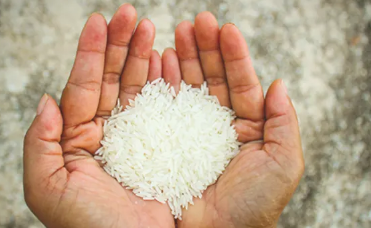Inside BENEO’s new pulse plant: pioneering sustainable protein from faba beans
Micronutrient deficiency, also known as ‘hidden hunger’, is a serious problem worldwide. This condition is prevalent where rice is a staple diet. Micronutrient deficiency affects all age groups and the burden is more among children and women of reproductive age 15-45 years.
Rice in its unpolished form is rich in Vitamin B1, B6, E and niacin. During milling and polishing of rice, the majority of the micronutrients are lost. The lost nutrients can be retained as well as additional micronutrients such as Iron, Zinc, Folic acid, Vitamin B-12, and Vitamin-A are added through
fortification.
Fortification of rice is a cost-effective strategy which has the potential to increase the daily intake
vitamins and minerals of the general population. Four technologies that are used in rice fortification include Hot Extrusion, Cold Extrusion, Coating and Dusting.
Barriers for accepting fortified rice
Public distribution sector dealers and village level frontline workers were not aware about fortified rice as government had interpreted that Fortified Rice Kernels (FRK) would go unnoticed. A myth about FRK was widely spread that it is made of ‘Plastic’. While the rice was being cooked, FRK floated on the surface and as a result it was misinterpreted as plastic rice and was witnessed being picked and thrown into the garbage.
People were reluctant to buy fortified rice due to its colour/taste/smell/texture. If the availability was restricted to fortified rice alone in the Public Distribution System (PDS), it was observed that people fed the fortified rice to the cattle rather than consuming it themselves. In Khunti district of Jharkhand, people complained about diarrhoea, stomach ache and body ache after consuming fortified rice that was distributed through the PDS.
In case of Sickle Cell Anaemia (SCA), red blood cells become sickle shaped to break down and release iron which increases the body’s storage of iron. When an individual suffering from SCA consumes iron-fortified rice, it may result in excess of iron storage in the body which cannot be used for haemoglobin formation, resulting in liver, heart and endocrine damage.
In patients suffering from Thalassemia, a blood transfusion would be needed owing to low haemoglobin levels. Consumption of iron-fortified rice in the case of Thalassemia can add up iron storage causing liver fibrosis, cardiac damage, reproductive problem and growth retardation.
Facilitators & recommendations for fortified rice
Attempts have been made to scale up rice fortification by engaging with government, NGO, private and multi-national organisations. In India, efforts have been taken for regulating the standards for
fortification of rice by the Food Safety And Standards Authority of India (FSSAI) in co-operation with other technical agencies. According to FSSAI regulations 2018, it is mandatory for fortified food product packets to have a fortification logo “F+”.
A warning statement must be included on the package – “People with Thalassemia should consume under medical supervision and persons with Sickle Cell Anaemia are advised not to consume iron-fortified food products.
Demand for fortified rice will increase when there is market development. Fortified rice will become
more acceptable when an established brand is selling the product. Rice is usually fortified in rice mills. Networking events for farmers and rice millers to share knowledge, ideas and experience about fortifying rice is the foundation on which the brand can be built upon.
Also, Health Professionals such as doctors and nutritionists can be brand ambassadors for fortified rice as doctor-patient relationship plays a vital role in the principles of medicine. There has to be constant improvement in packaging, processing, price, aesthetics and branding to level up the product as the customer behaviour keeps shifting.
With adequate steps for improved community engagement rice fortification could be a powerful tool to address micronutrient deficiency
About the authors-
Panchami L R and Priyanka Rao, Public Health Evidence South Asia (PHESA), Department of Health Information, Prasanna School of Public Health, Manipal Academy of Higher Education and Indian Institute of Public Health (IIPH), Gandhinagar along with Nachiket Gudi (PHESA)
Image credit- shutterstock

